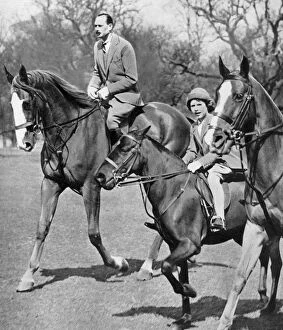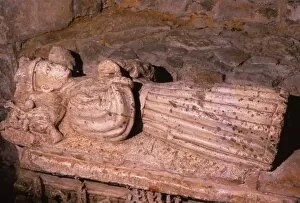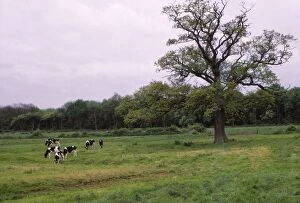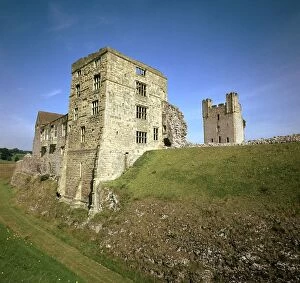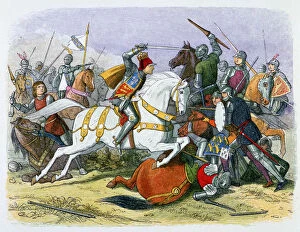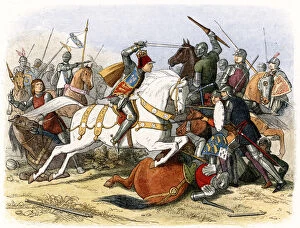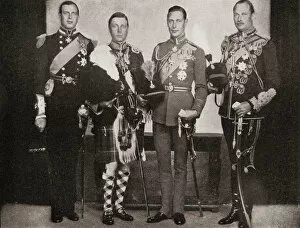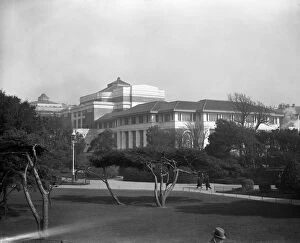Duke Of Gloucester Collection (#5)
The Duke of Gloucester, a prominent figure in the Houses of York and Lancaster, played a significant role in the tumultuous history of England
For sale as Licensed Images
Choose your image, Select your licence and Download the media
The Duke of Gloucester, a prominent figure in the Houses of York and Lancaster, played a significant role in the tumultuous history of England. With origins tracing back to Edward III and Henry VII, his lineage was steeped in royal blood. In 1483, Richard was offered the kingship at Baynards Castle in London. This pivotal moment marked a turning point for him as he ascended to power amidst political intrigue and controversy. The Young Princes in the Tower captured public imagination with their mysterious disappearance. Painted by Paul de la Roche, this haunting image serves as a reminder of the dark events that unfolded during Richard's reign. Anne of Warwick, queen consort to King Richard III, embodied loyalty and devotion. Her portrait from 1851 showcases her regal beauty and unwavering support for her husband. Fast forward to modern times; H. R. H The Duke of York, H. R. H The Prince of Wales, H. R. H Prince Henry (now known as Harry), and H. M The Queen continue to carry on the legacy left behind by their ancestors. Tragedy struck when rumors circulated about the murder of the Princes in the Tower. A vividly colored lithograph depicts this chilling event that has captivated historians for centuries. Edmund Kean's portrayal of Richard III on stage brought this complex character to life. John Byrne's depiction captures Kean's intensity and charisma while embodying Shakespeare's iconic villain. The Battle of Tewkesbury saw Prince Edward meet his untimely demise after being captured by King Edward IV. This dramatic scene depicted through color lithography offers a glimpse into one of England's most brutal conflicts. Richard further solidified his authority by ordering Lord William Hastings' arrest just days before becoming king himself. This act showcased his determination to eliminate any potential threats or oppositions within his realm. An intriguing artwork portrays an old woman wearing a rosary cursing a seated man, possibly Queen Margaret cursing the Duke of Gloucester.






